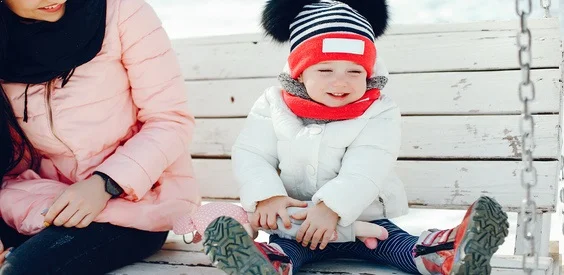Min. order price$300
Min. order price$300

Winter is the time of year when it is important to provide your child with warm and comfortable shoes. Choosing winter shoes for children is a responsible process that requires attention to detail. Properly selected shoes will provide comfort and protection from cold, rain and snow. In this article we will tell you how to correctly determine the shoe size for children in order to buy the right model.
Choosing the right winter shoes for children is very important as it affects their health and comfort during the cold season. The main thing is that it matches the size of the child’s feet by age. Here are a few key aspects that make this choice so important:
1) Thermal protection. Winter shoes should provide effective thermal insulation to protect your child's feet from the cold. Poorly fitting shoes can lead to hypothermia, which can cause colds and other health problems.
2) Waterproof. Winter shoes for children should be waterproof to prevent moisture penetration. Wet feet can cause colds and increase the risk of colds.
3) Stability and grip. It is important that shoes provide good stability on slippery surfaces to prevent falls and injuries.
4) Foot support. Proper footwear should provide good foot support, especially for young children whose feet are still developing.
5) Size and fit. Wearing shoes that are the wrong size can cause foot deformities and pain. It is important to know how to choose shoes for your child and regularly update them as needed.
6) Comfort and breathable materials. Shoes should be comfortable to wear as well as allow air circulation to prevent excessive sweating and provide a healthy foot environment.
7) Materials. Choose shoes made from high-quality materials that do not cause allergies and ensure a long service life.
Choosing shoes for children of different ages is an important aspect of caring for the health and comfort of children. Here are recommendations for each age group.
Babies
- Shoes for babies should be soft and flexible so as not to limit the development of small feet.
- Avoid shoes that are too tight or loose. Check your shoe size regularly as children's feet grow quickly.
- Shoes with Velcro or zippers are preferable as they make it easier to put on and take off.
- Avoid synthetic materials, give preference to natural, breathable fabrics.
Preschoolers
- Choose shoes with good arch support, especially for active children. It is desirable that the shoes have a hard heel and a stable sole.
- Shoes with adjustable features, such as laces or Velcro, allow for a better fit to the shape of your foot.
- Pay attention to the stability of the sole to prevent falls and injuries.
Pupils
- Since children's feet grow quickly, regularly measure the length of the feet to determine the size of the child's feet and choose shoes with a margin.
- Consider the activity of children at school. Shoes must be durable to withstand daily wear and tear.
- It is important that the shoes are comfortable, especially if the child spends a lot of time at school.
- Avoid shoes that are too tight and choose shoes made from breathable materials to prevent excessive sweating.
- Consider your child's style and preferences to ensure not only comfort, but also satisfaction of aesthetic preferences.
- In any case, careful attention to the choice of shoes will help ensure the correct formation of the foot and support the health of children.
Caring for winter shoes plays an important role in their durability and maintaining their good appearance. Here are instructions for caring for winter shoes:
Clearing snow and salt:
- After walking in snowy or icy weather, thoroughly clean your shoes of snow and salt. Salt can damage materials and cause white streaks.
- Use a soft brush or damp sponge to remove dirt and salt from the surface of the shoe.
Drying:
- Do not allow your shoes to overheat. Avoid using heaters or direct sunlight as this may cause the materials to warp.
- Fill your shoes with newspaper to absorb moisture. This helps maintain its shape and dry faster.
Moisture protection:
- Use special products to protect against moisture and salt. Treating your shoes with protective sprays or waxes helps prevent moisture penetration and reduce the risk of slush.
Storage:
- Store shoes in a dry and ventilated place. Avoid areas with direct access to sunlight and excessive humidity.
- Use wooden or plastic molds to maintain the shape of shoes, especially boots.
Maintaining appearance:
- Use special products to clean and care for shoe materials. For example, for suede and nubuck, use brushes and sponges of the appropriate type.
Proper storage:
- If shoes are not used for a long time, store them in well-ventilated bags or boxes to avoid dust and maintain freshness.
- Following these recommendations will help keep your winter shoes in excellent condition, providing them with maximum service life.
In conclusion, I would like to emphasize that choosing the right winter shoes for a child is of key importance for his health and comfort during the cold season. Winter shoes should not only provide warmth and protection from moisture, but also support normal foot development and prevent possible health problems.